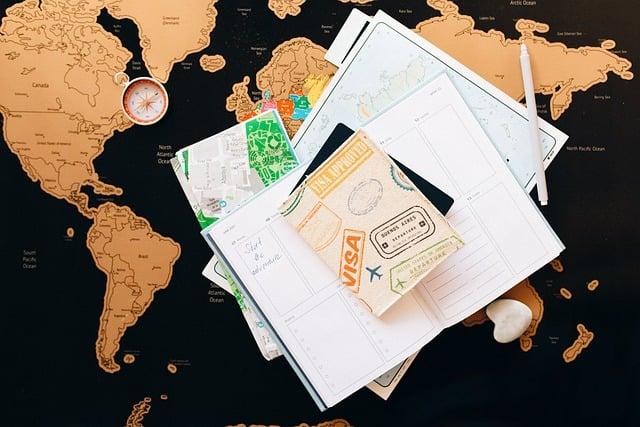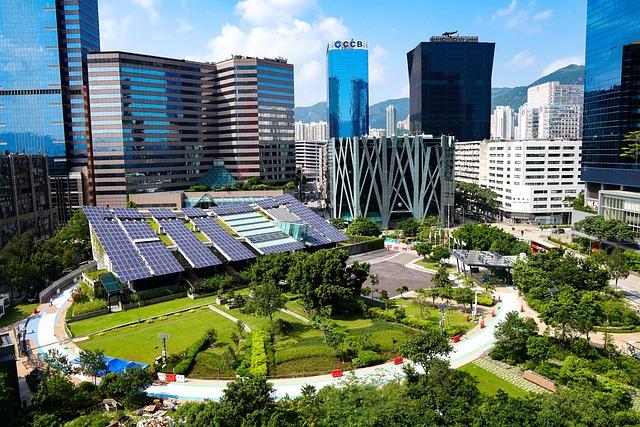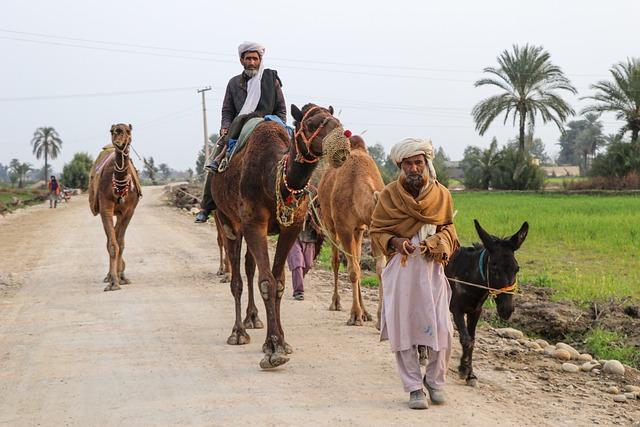Exploring Immigration Trends: The Pakistani Diaspora’s Journey
In a world increasingly characterized by movement and migration, the journey of the Pakistani diaspora stands as a compelling narrative woven through the fabric of diverse cultures and experiences. From the bustling streets of Karachi to the vibrant neighborhoods of London, New York, and Toronto, the stories of Pakistani immigrants reveal more than just statistics—they illuminate the hopes, challenges, and resilience of individuals seeking better opportunities. This article delves into the intricate tapestry of immigration trends, highlighting the motivations behind departures, the realities of settling in new lands, and the enduring connections that bind the diaspora to their homeland. As we navigate this evolving landscape, we will uncover the rich narratives that shape both the Pakistani identity and the broader global community, exploring how the journey continues to redefine what it means to belong.
Understanding the Historical Context of Pakistani Immigration Patterns
The historical context of Pakistani immigration is intricately woven into the fabric of geopolitical shifts, economic opportunities, and social dynamics. Following the partition of British India in 1947, a significant wave of migration emerged, predominantly due to the turmoil and unrest that accompanied the division. Many Muslim families sought refuge in what became Pakistan, while others left Pakistan in search of better prospects abroad, particularly in countries like the UK, the US, and Canada. This early diaspora laid the groundwork for future generations, who navigated identity and belonging amidst diverse cultural landscapes.
As the decades progressed, various socio-economic factors influenced subsequent waves of immigration. Key motivations for emigrating included:
- The quest for higher education and professional opportunities.
- Pursuit of political asylum amid regional conflicts.
- The influence of family reunification policies in host countries.
Notably, the late 20th century saw a marked increase in skilled professionals from Pakistan migrating to the West, propelled by global economic demands and the IT boom. This era signified a shift from labor-based migration to a focus on skills and expertise. The table below illustrates the growth of the Pakistani diaspora over the years:
| Year | Estimated Pakistani Diaspora |
|---|---|
| 1980 | 500,000 |
| 2000 | 1.5 million |
| 2020 | 2.5 million |

Cultural Identity and Integration: The Pakistani Diaspora Experience
The journey of the Pakistani diaspora is a rich tapestry woven with diverse cultural threads and the complexities of integration. As individuals and families navigate the challenges of settling in new countries, they often grapple with maintaining their cultural heritage while also embracing the local culture. This duality can foster a sense of belonging and disconnection, leading to unique experiences of identity transformation. Many Pakistani immigrants contribute to the multicultural fabric of their new societies, sharing their traditions through food, festivals, and community gatherings that are infused with Pakistani elements, creating a dialogue between cultures.
Moreover, the role of community networks significantly shapes the integration process. Support systems among compatriots provide emotional and practical assistance, facilitating the transition into the local lifestyle. Integration is not merely about assimilation; it is also about celebrating diversity. Through the creation of cultural organizations and participation in interfaith dialogues, Pakistani communities often seek to foster a greater understanding of their cultural narratives. The table below illustrates some key aspects of cultural identity and integration within the Pakistani diaspora:
| Aspect | Description |
|---|---|
| Cultural Celebrations | Festivals like Eid and Basant celebrated with local communities. |
| Language Preservation | Use of Urdu and regional languages among families and cultural events. |
| Community Organizations | Establishment of groups that promote Pakistani culture and provide support. |
| Intercultural Dialogue | Engagement with different communities to share stories and experiences. |

Economic Contributions and Challenges within Host Countries
The Pakistani diaspora has made significant and far-reaching economic contributions to their host countries. Migrants often bring with them valuable skills, entrepreneurship, and a unique perspective that can enhance local economies. They contribute to various sectors such as healthcare, information technology, and construction, driving innovation and increasing productivity. Furthermore, many members of the diaspora establish businesses that create jobs and stimulate economic growth, fostering diversity within the labor market. Some notable contributions include:
- Job Creation: Pakistani entrepreneurs often hire local talent, boosting employment rates.
- Remittances: Financial contributions sent back home support local economies and improve living standards in Pakistan, creating a positive cycle of economic support.
- Cultural Exchange: The blending of cultures leads to increased tourism and international business opportunities.
However, the influx of immigrants also poses challenges for host countries. Strains on public services, such as healthcare and education, arise when immigration levels surge, prompting discussions about resource allocation and sustainability. Significant economic contributions may also lead to tensions concerning labor competition, as some local populations may perceive immigrant workers as a threat to their job security. A table outlining some challenges faced by host countries is presented below:
| Challenge | Description |
|---|---|
| Public Services Strain | Increased demand on local healthcare and education systems. |
| Labor Market Competition | Concerns over job opportunities for local workers. |
| Cultural Integration | Difficulties in assimilating diverse cultural practices and values. |

Future Considerations: Policy Recommendations for Sustainable Migration
To foster sustainable migration patterns, it’s crucial to implement policies that address the unique needs of the Pakistani diaspora while promoting integration and development at both local and national levels. Policymakers should consider the following recommendations:
- Enhance Bilateral Agreements: Establish and strengthen collaborations between Pakistan and host countries to streamline migration processes and protect migrant rights.
- Promote Circular Migration: Encourage policies that allow for flexible migration options, allowing expatriates to return without losing their status or benefits.
- Support Skills Development: Invest in programs that equip migrants with skills relevant both in Pakistan and abroad, ensuring their successful integration into host societies.
- Cultivate Diaspora Networks: Leverage the power of community organizations and social networks, fostering collaboration for mutual support and knowledge exchange.
Additionally, integrating technology into migration management can play a pivotal role. Governments should focus on the following aspects:
| Aspect | Description |
|---|---|
| Data Collection | Utilize digital platforms to gather real-time migration data for evidence-based policy planning. |
| Mobile Platforms | Create applications that provide resources and support for those in transit or settling in new countries. |
| Awareness Campaigns | Leverage social media and online resources to educate potential migrants about opportunities and risks. |
The Way Forward
the journey of the Pakistani diaspora is a vibrant tapestry woven from countless individual stories, memories, and aspirations. As we have explored the various immigration trends, it becomes evident that this community is not just a reflection of the challenges faced, but a testament to resilience, adaptability, and the ever-evolving nature of cultural identity. As the world continues to change, so too will the narratives of those who leave their homeland in search of new opportunities. Understanding these trends offers not only a glimpse into the Pakistani experience abroad but also a broader perspective on the intricate dynamics of migration in our global society. Ultimately, it is in these journeys that we find the shared humanity that unites us all, regardless of borders or backgrounds. As we look to the future, let us appreciate the rich contributions of the Pakistani diaspora and continue to engage in conversations that honor their experiences while fostering greater understanding among cultures.



